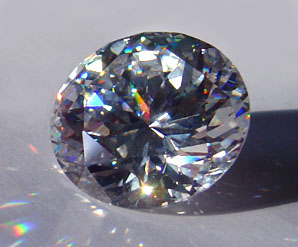
We have all seen fake gold and diamond rings in those $0.25 toy vending machines outside of the supermarket, but how can you know if the ring you just purchased for your boyfriend or girlfriend is made with the same materials? A reputable dealer, such as the Coin Galleries of Oyster Bay, employ professional gemologists who can tell the difference between real gold and diamonds or a fake imitator, such as pyrite (fool’s gold) or cubic zirconia, which is worth far less. For the laymen out there, however, there are a few ways t tell if the gold or diamond you possess is the real thing or just a cheap imitator.
If you have a piece of jewelry you think is fake, it is best to take it to a reputable dealer or gemologist as they have the equipment and expertise to verify if the stone is real, but you can also perform a few tests at home to find out for yourself. The fog test is the most common and easiest way to validate your gemstone without professional equipment. Breathe hot air on the diamond as you would if you were fogging up a bathroom mirror. A real diamond will not fog up as the element does not retain heat, while a fake diamond will fog up for a short period of time.
The second easiest test to tell if a diamond is real is through checking it’s refractivity. Take a newspaper or any other piece of paper with writing on it, flip the diamond upside down, and look at the writing through the stone. If you cannot read the text, then you have a real diamond. A fake diamond will let the black shine through, and you may even be able to read what is written depending on the size of the stone.
Gold can be a little trickier to tell as not all home tests are effective, but you can get a general idea before bringing it to a reputable dealer such as the Coin Galleries of Oyster Bay. Check the actual piece for an official stamp or any discoloration as fake gold may rub off and expose a completely different metal underneath it. The bite test, although not recommended, will leave indentations on real gold as the metal is very soft. A fake piece of gold will show no bite marks as most imitation metals are harder than real gold. Gold is not a magnetic metal, and if it is attracted to a magnet, the gold is fake.
Nobody wants fool’s gold or cubic zirconia, so if you believe you may have a fake piece of jewelry or gold, use the above tests or come down to the Coin Galleries of Oyster Bay to have a professional gemologist verify the value of your piece.

